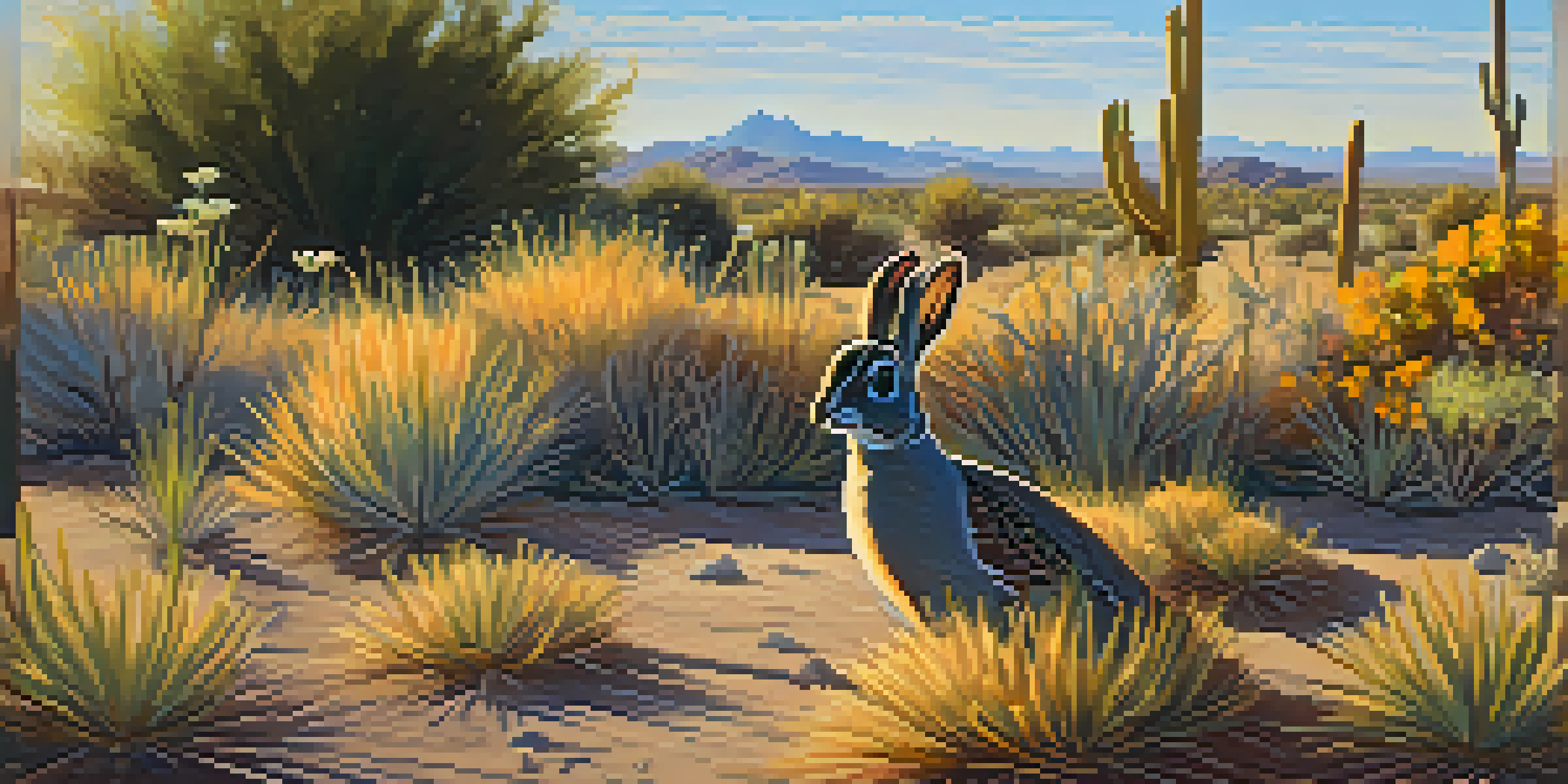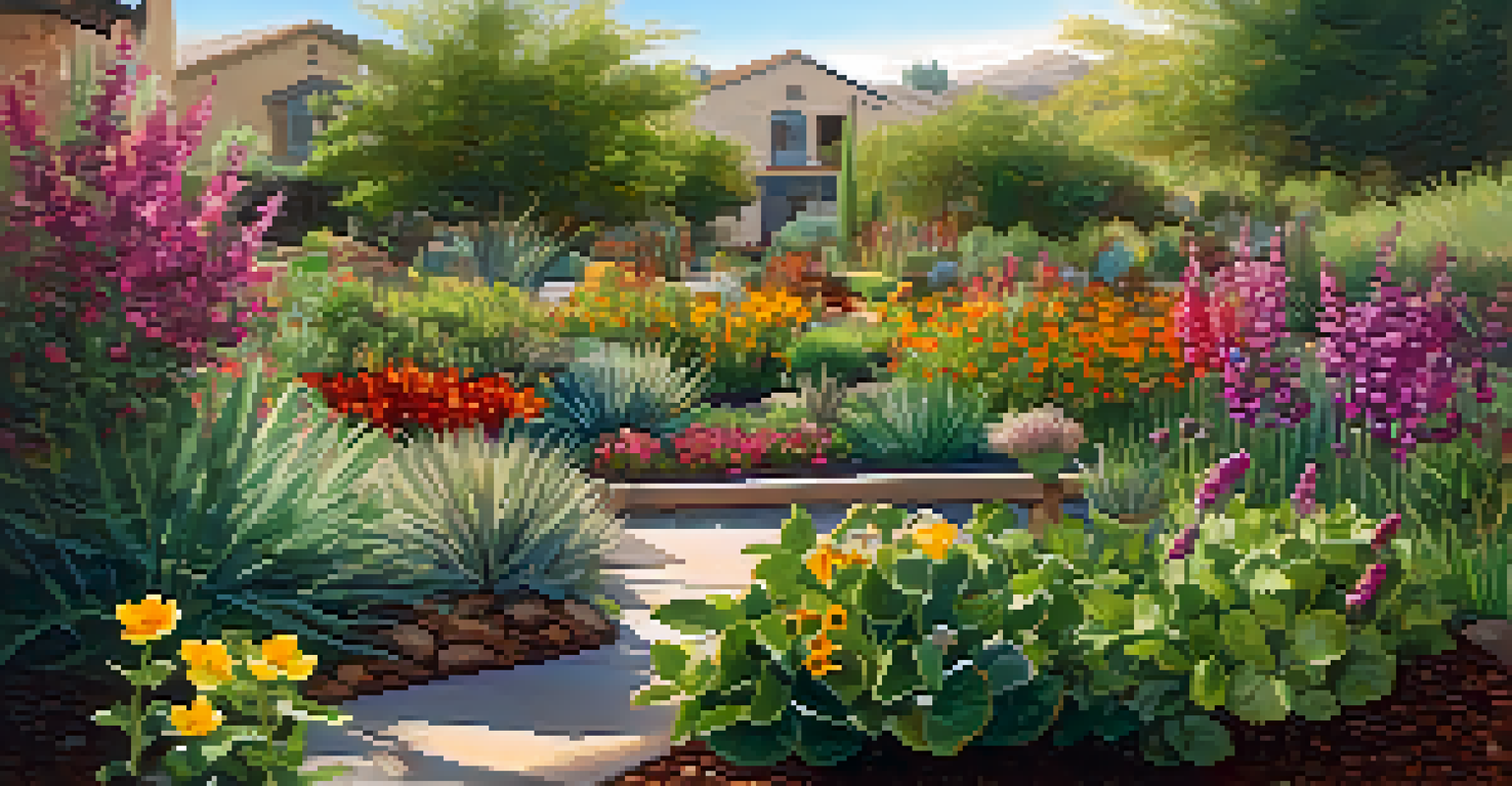Urban Wildlife: Adapting to Phoenix’s City Environment

Understanding Urban Wildlife in Phoenix
Urban wildlife refers to animals that have adapted to live in city environments. In Phoenix, this can include species like coyotes, rabbits, and a variety of birds. These animals have found ways to thrive amidst the concrete and chaos, turning urban spaces into their homes.
In every walk with nature one receives far more than he seeks.
For instance, coyotes have become quite common in the Phoenix area. They navigate parks, neighborhoods, and even busy streets, showcasing their remarkable adaptability. Many people are surprised to learn that these creatures have learned to coexist with humans, often scavenging for food scraps.
This adaptation not only illustrates the resilience of wildlife but also highlights the importance of understanding their behaviors. By recognizing how these animals adapt, we can better coexist and appreciate the unique urban ecosystem that Phoenix provides.
Key Species Adapting to Urban Life
Several species have made Phoenix their urban playground, adapting their behaviors to find food and shelter. Common examples include jackrabbits, which are often spotted in city parks and golf courses. These animals have adjusted their activity patterns to avoid peak human hours, making them less visible.

Bird species such as the Gambel's quail and various sparrows have also adapted remarkably to urban settings. They often thrive in residential areas, utilizing gardens and yards as foraging grounds. This not only enriches the urban landscape but also provides a delightful opportunity for birdwatchers.
Urban Wildlife Thrives in Phoenix
Various species like coyotes and jackrabbits have adapted to urban life, showcasing their resilience in city environments.
Additionally, the presence of these adaptable species can serve as indicators of environmental health. Their ability to flourish in the city suggests a certain level of ecological balance, which is essential for sustaining urban biodiversity.
Challenges Faced by Urban Wildlife
While many animals have adapted to city life, they still face numerous challenges. Habitat loss due to urban development is one significant issue. As Phoenix expands, wildlife habitats are often fragmented, making it harder for animals to find food and mates.
The greatest threat to our planet is the belief that someone else will save it.
Moreover, the dangers of urban living can impact wildlife survival. Traffic accidents, human-wildlife conflicts, and pollution pose serious threats to urban wildlife populations. For instance, many animals become victims of vehicle collisions, reducing their numbers significantly.
Despite these challenges, some species continue to demonstrate remarkable resilience. Understanding these threats can help city planners and residents develop strategies to create safer environments for wildlife, ensuring a harmonious coexistence.
The Role of Green Spaces in Urban Adaptation
Green spaces play a crucial role in supporting urban wildlife. Parks, gardens, and natural preserves provide essential habitats and food sources for various species. In Phoenix, these green areas are vital for animals to thrive amidst the urban sprawl.
For example, the Desert Botanical Garden not only showcases native plant species but also attracts a range of wildlife. Birds, butterflies, and small mammals find refuge and nourishment here, highlighting the importance of preserving such spaces.
Green Spaces Support Biodiversity
Parks and gardens are vital for urban wildlife, providing essential habitats and food sources amidst urban sprawl.
Moreover, community gardens and residential landscaping can also contribute to urban biodiversity. By planting native species and creating wildlife-friendly environments, residents can help sustain local wildlife populations while enhancing their own outdoor spaces.
Importance of Community Awareness and Education
Community awareness is vital in fostering a harmonious relationship between humans and urban wildlife. Understanding the behaviors and needs of local animals can reduce conflicts and promote coexistence. Educational initiatives can empower residents to appreciate the wildlife around them.
For instance, workshops on wildlife-friendly gardening can teach residents how to create environments that attract beneficial species. These efforts can lead to healthier ecosystems and encourage local wildlife to thrive.
Additionally, sharing information about local wildlife through social media and community events can enhance public interest. By fostering a sense of stewardship, communities can work together to protect and celebrate the urban wildlife that enriches Phoenix.
Conservation Efforts in Urban Areas
Conservation efforts in urban settings are essential for protecting wildlife populations. Organizations in Phoenix are working to create and maintain green corridors, which connect fragmented habitats and allow animals to move safely through the city. These initiatives are crucial for maintaining genetic diversity among urban wildlife.
Moreover, public awareness campaigns often focus on responsible pet ownership, emphasizing the importance of keeping pets leashed and supervised. This not only helps protect wildlife from domestic animals but also ensures the safety of pets themselves.
Community Action Enhances Coexistence
Residents can contribute to urban wildlife conservation through education, responsible gardening, and participation in local projects.
Engaging local communities in conservation projects can foster a sense of responsibility and connection to urban wildlife. When residents participate in habitat restoration or wildlife monitoring, they become advocates for the animals that share their space.
How Residents Can Help Urban Wildlife Thrive
Residents can play a significant role in supporting urban wildlife. Simple actions, such as planting native plants in their gardens, can provide essential food and shelter for local species. Creating habitats that mimic natural environments can encourage wildlife to visit and thrive.
Furthermore, reducing pesticide use can have a profound impact. Chemicals can harm not only target pests but also beneficial insects and other wildlife. By opting for organic gardening methods, residents can promote a healthier ecosystem for all.

Lastly, residents can participate in citizen science projects, contributing valuable data about local wildlife populations. This involvement not only helps scientists track trends but also fosters a deeper appreciation for the rich biodiversity that exists in urban environments.